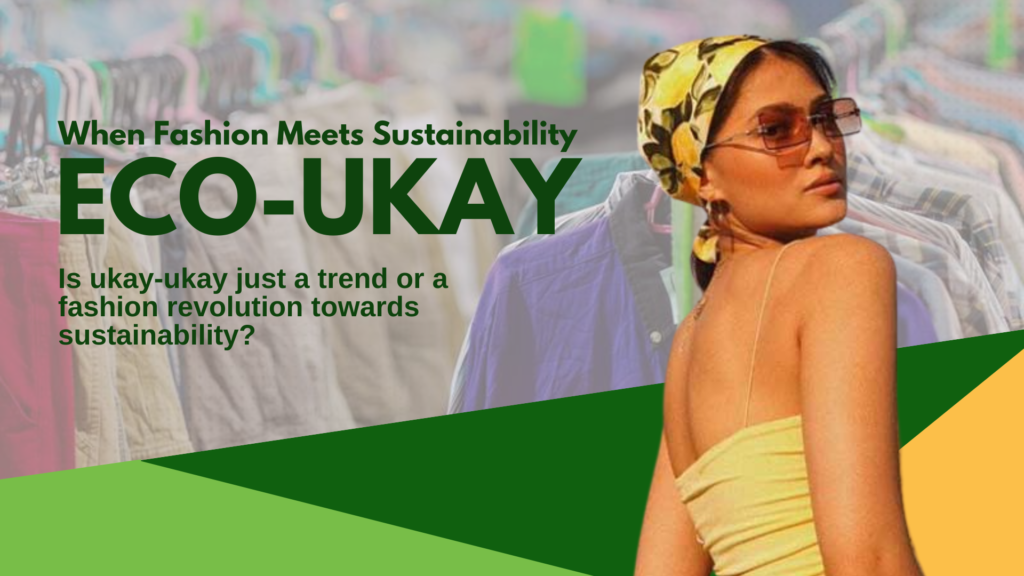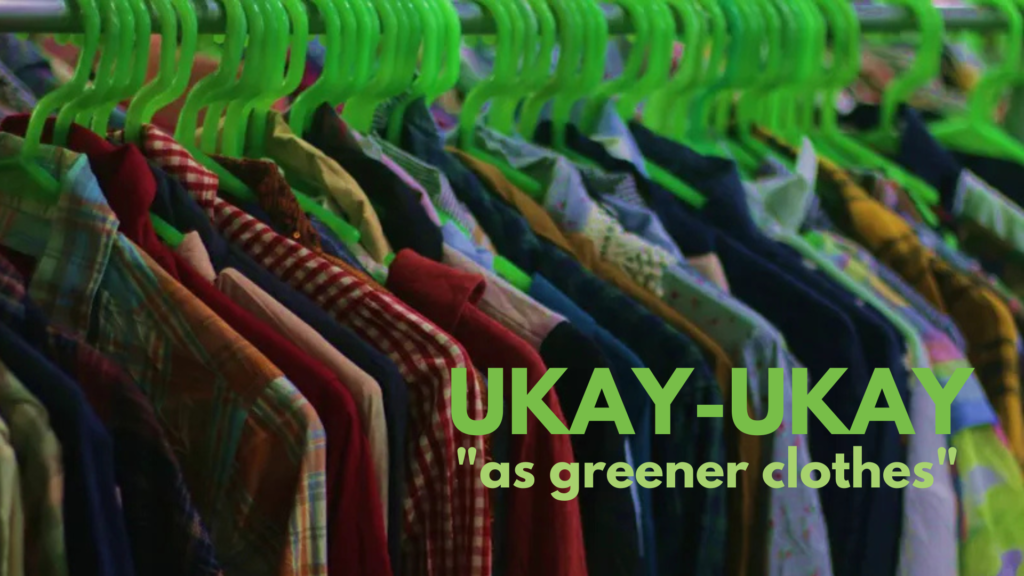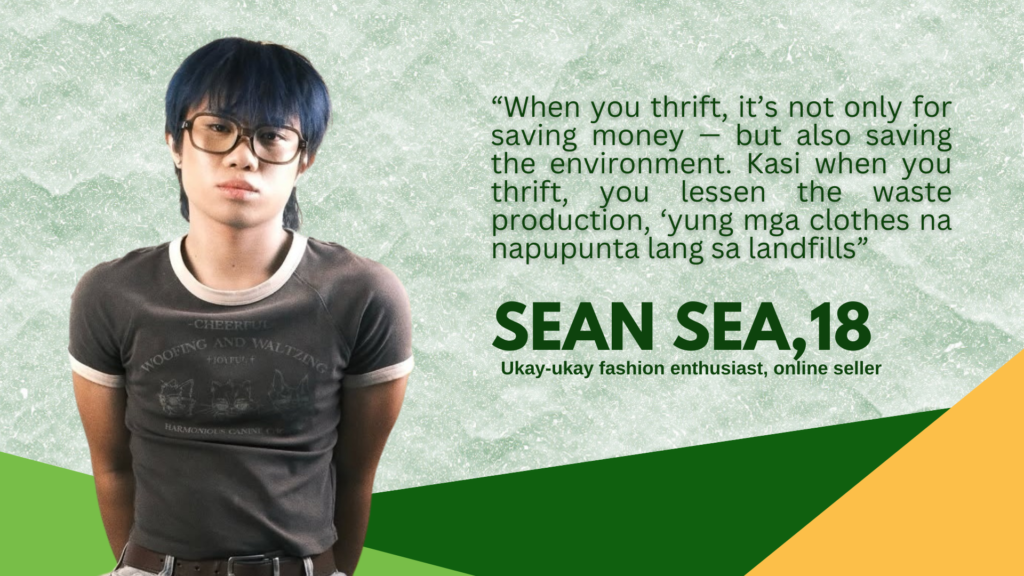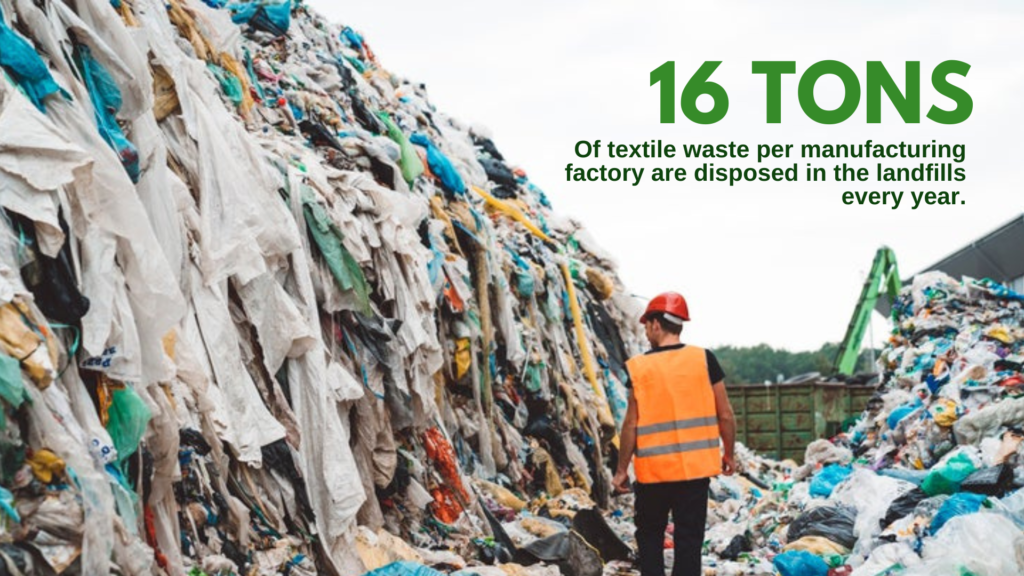ECO-UKAY: A New Fashion Statement of Gen Z Towards Sustainability
Written by Justine David Regalado
“3 shirts for 100 pesos.” Have you ever seen this price mark and got curious about what the real deal is? Or have you ever spent so many hours in a thrift shop just to find the best clothes that are affordable yet suitable for your fashion statement?

Thrifting, widely known locally as “Ukay-Ukay”, is a common retail practice in the Philippines where secondhand and pre-owned clothes, bags, shoes, as well as accessories, are sold at a very affordable price. The term “ukay-ukay” came from the Filipino word “hukay” or “halukay,” which means to dig, making it a treasure hunting scenario for the practical and budget-conscious shoppers, most especially the fashion trendsetter youth who spend hours looking for that unique and quality clothing.

Courtesy to: Shara Tobias
This informal economic market started in the late 1980s, when the US and Europe shipped second-hand threads to the Philippines as a charity, which was sold in the streets. From then on, ukay-ukay grew its popularity from the cities down to the provinces and from the streets to online selling – ukay-ukay has opened and provided business opportunities for Filipino entrepreneurs. With that being said, ukay-ukay, or pag-uukay has long been a Filipino culture.
During the past few years, it was noticeable that the major buyers of thrift clothes are Generation Z. With their open-mindedness to modern clothing and awareness of climate change, buying these clothes is their way to help the planet because for them, thrifting is not just about saving, it’s also about sustainability.

Courtesy to: Sean Sia
One of the best examples of this is Sean Sia, an 18-year-old fashion enthusiast and an online seller who started thrift shopping during the pandemic when he had time to explore his fashion sense and style. He pointed out his realization that Generation Z is much open to using second-hand clothes and pre-loved items. He also highlighted that thrift shopping is something bigger than just generational open-mindedness. He thinks of it as a “responsible thrifting,” which is one way to reduce textile waste, a main contributor to climate change.
“When you thrift, it’s not only for saving money, but also for saving the environment. Kasi when you thrift, you lessen the waste production, ‘yung mga clothes na napupunta lang sa landfills”, he emphasized.
According to the Philippine Textile Research Institute, it was estimated that one manufacturing factory can produce up to 16 tons of textile waste every year. The accumulation of textile waste in landfills from the manufacturing post-production processes has caused several environmental issues, including soil degradation and resource depletion.
Second, the growing dependence of people on the fast fashion industry. This is because fast fashion satisfies the consumer’s constant need for new clothing products due to its mass production and affordable price, making it more convenient for people to buy. However, this discerning demand and influence of various fashion trends also forces the industry to produce more and more products to meet this consumer’s fashion behavior. Without a proper recycling system, these unmindful actions can lead to more serious issues. So, do you think that this is really convenient?
But the real problem lies in people’s lack of awareness and deeper understanding of how serious this problem is. That’s why younger generations who are more open and inclined towards such topics have actively participated in public discussion, encouraging others to seek alternative solutions, and how ukay-ukay is one of the better options. By reselling, buying, and reusing such products, the life span of these clothes will last longer, minimizing the need to buy a new set of clothes that can only be worn for a short period of time.

Courtesy: Just Style
As mentioned by Sia, clothes are meant to be reworn and are supposed to be used in different contexts. Ched (2024) supported this claim by reminding everyone that buying a piece of clothing comes with a commitment, and one should commit wholeheartedly to it.
Nitira (2019), on the other hand, pointed out that one of the reasons why younger generations preferred to buy ukay-ukay clothes is that one can get a product that has been designed by an authentic designer at a low and affordable price.
Another behavior that is observed among youth when it comes to their fashion aesthetic is that they tend to explore different themes and genres of clothing, particularly in bringing back the old fashion alive again. This is known as “trend cycle”, where the youth are redefining the aura of 90s fashion, such as ripped jeans, baggy pants, and a couple of patterns and checkered shirts to achieve that grunge look.

Courtesy: Pinterest, Mylook
Along with these, they also grab the opportunity that ukay-ukay clothes have by utilizing their creativity and the power of online market platforms. Many of them buy these thrift clothes in bulk, redesigning those shirts and pants, and selling them at a negotiable price, making it a win-win situation for the market and for them.
At the end of the day, we have our own preferences. The clothes that we wear don’t display our social standing, but are a way to express and showcase ourselves. Some people may find their luxury by buying expensive clothes, and there’s no problem with that, while others prefer to spend so many hours just to dig up that little luxury of a lifetime, a cloth that can be passed down to the next generation. It’s not just about having the choice of what to wear or how much the price is, but rather this is about thinking about the consequences our small actions would lead to in the future, because our true luxury is the environment and the planet that we have.
Do you think that ukay-ukay could be the potential solution to textile waste? Or is it just a fashion trend remedy for a short period of time? Are we truly revolutionizing ukay-ukay clothing as a new fashion statement towards sustainability?
What do YOUTH think? What do YOU think?
References:
Team, G. (2025, March 17). Ukay-Ukay: an urban second-hand clothing retailer. Traveloka. https://www.traveloka.com/en-ph/explore/tips/what-is-ukay-ukay-acc/409025
Gatchalian, C. R. (2024, October 26). This Gen Z fashionista believes there’s more to “ukay-ukay” than cheap prices | ABS-CBN Lifestyle. ABS-CBN. https://www.abs-cbn.com/lifestyle/2024/5/21/this-gen-z-fashionista-believes-there-s-more-to-ukay-ukay-than-cheap-prices-1654
Reina Rose B. Realino (2025, February 05). How the Philippines is Making Every Fabric Count in the Fight Against Textile Waste. Philippine Textile Research Institute | Department of Science and Technology (DOST). https://www.ptri.dost.gov.ph/faq/9-transparency-seal/629-how-the-philippines-is-making-every-fabric-count-in-the-fight-against-textile-waste
Hazel T. Biana (2020). The Philippine Ukay-Ukay Culture as Sustainable Fashion. DLSU Business & Economics Review. https://www.dlsu.edu.ph/wp-content/uploads/2020/08/12Biana.pdf